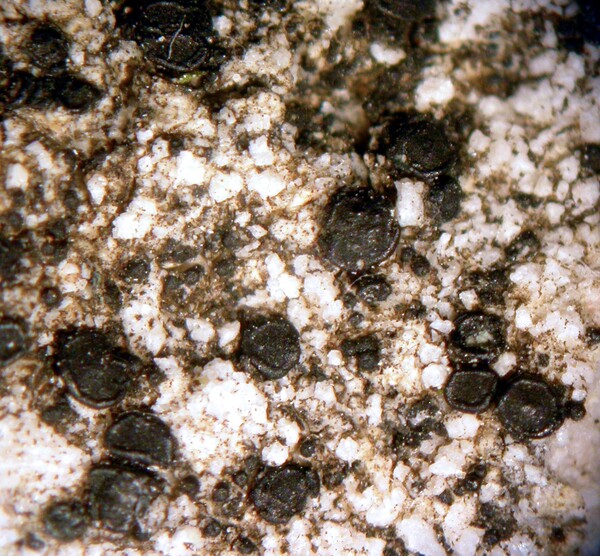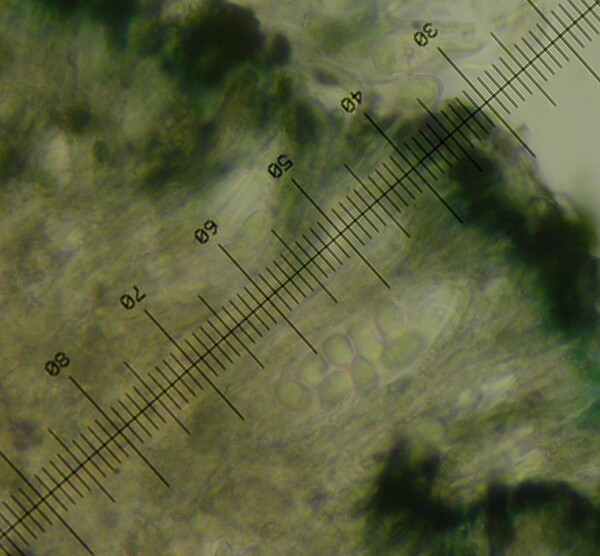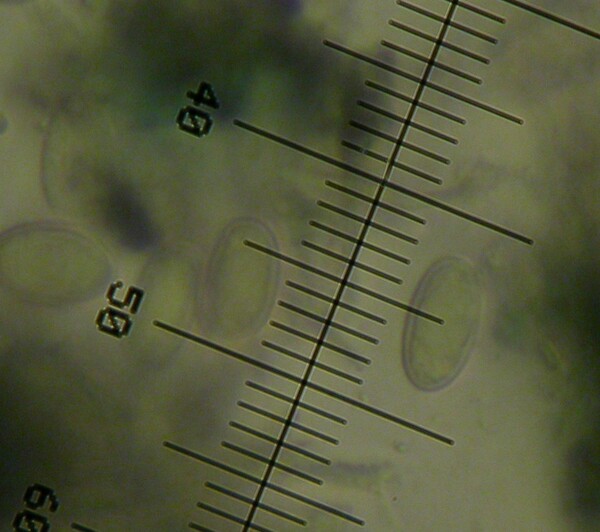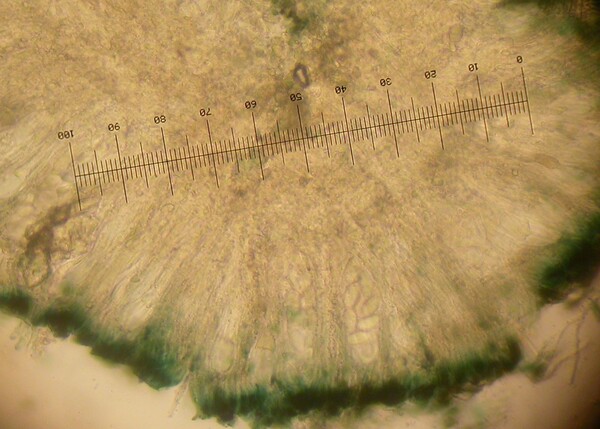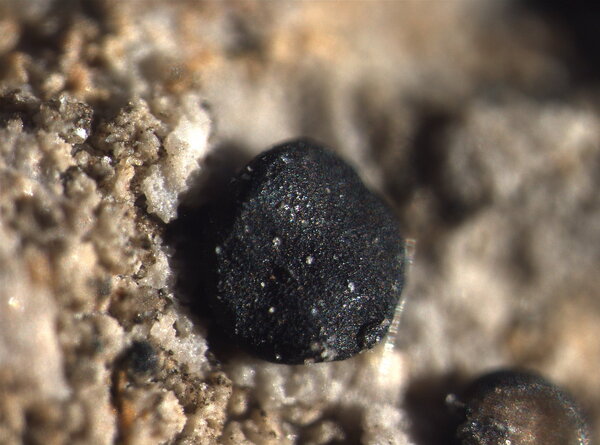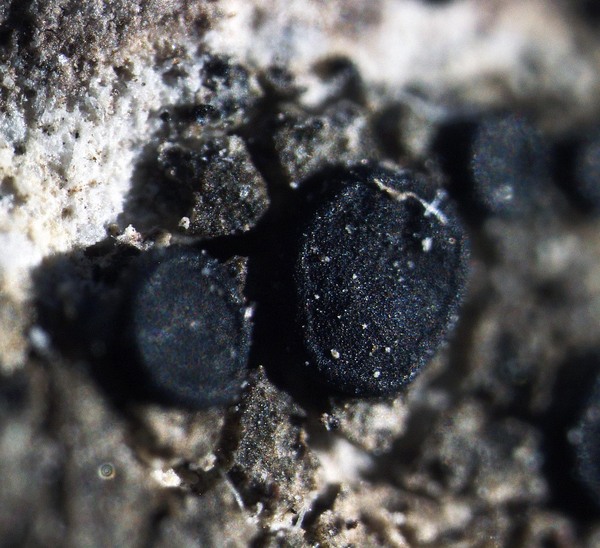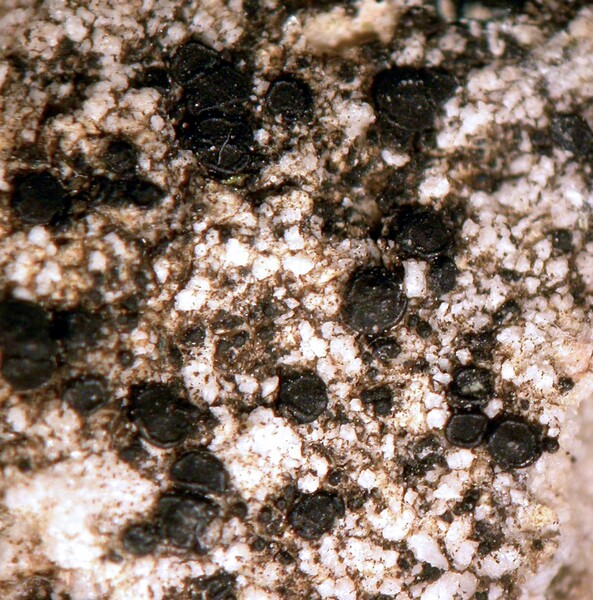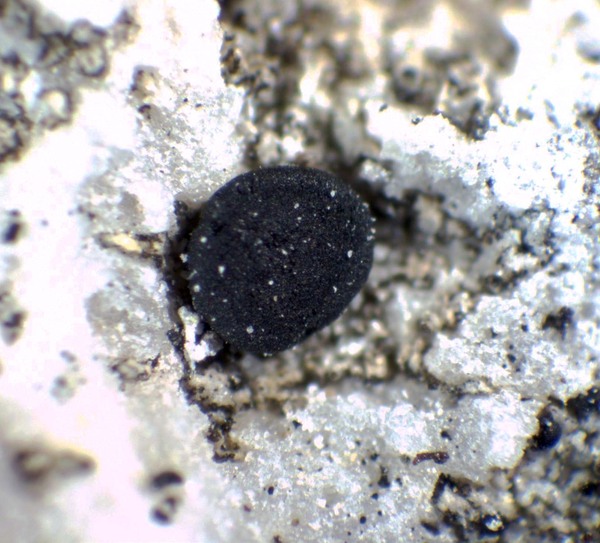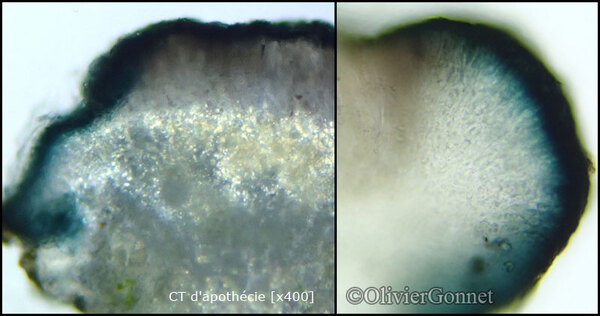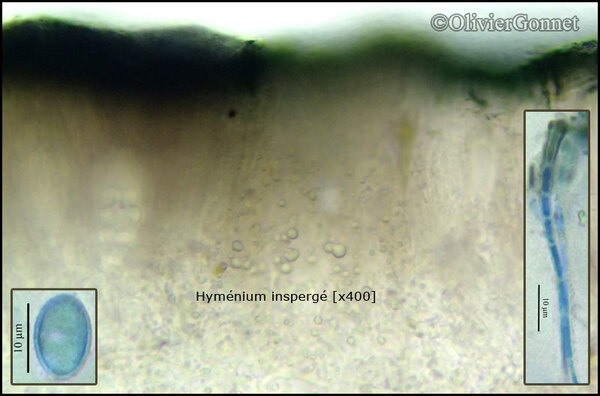Lecidella patavina (A. Massal.) Knoph & Leuckert
in Knoph, Bibl. Lichenol., 36: 116, 1990. Basionym: Lecidea patavina A. Massal. - Ric. Auton. Lich. Crost.: 69, 1852.
Synonyms: Buellia sordida (A. Massal.) Jatta; Catillaria sordida A. Massal.; Lecidea acrocyanea (Th. Fr.) H. Magn.; Lecidea alaiensis Vain.; Lecidea araratica Müll. Arg.; Lecidea endolithea Lynge; Lecidea enteroleuca var. cacuminum J. Steiner; Lecidea epipolioides (J. Steiner) Szatala; Lecidea inamoena Müll. Arg.; Lecidea piemontensis B. de Lesd.; Lecidea portensis Nádv.; Lecidea rolleana H. Magn.; Lecidea rolleana var. portensis (Nádv.) Hertel; Lecidea spitsbergensis Lynge; Lecidea vulgata f. patavina (A. Massal.) Zahlbr.; Lecidella alaiensis (Vain.) Hertel; Lecidella alaiensis var. spitsbergensis (Lynge) Clauzade & Cl. Roux; Lecidella endolithea (Lynge) Hertel & Leuckert; Lecidella inamoena (Müll. Arg.) Hertel; Lecidella spitsbergensis (Lynge) Hertel & Leuckert
Distribution: N - Frl, Ven (Nimis 1994, Caniglia & al. 1999, Lazzarin 2000b, Nascimbene & Caniglia 2003c, Thor & Nascimbene 2007), TAA (Nascimbene 2003, Hertel & Schuhwerk 2010, Spitale & Nascimbene 2012, Nascimbene & al. 2022), Lomb, Piem, VA (Piervittori & Isocrono 1999), Emil (Tretiach & al. 2008, Fariselli & al. 2020), Lig (Giordani & al. 2016). C - Tosc, Marc (Nimis & Tretiach 1999), Umb (Nimis & Tretiach 1999, Ravera & al. 2006), Laz (Nimis & Tretiach 2004), Abr (Nimis & Tretiach 1999, Gheza & al. 2021), Mol (Nimis & Tretiach, 1999, 2004, Caporale & al. 2008), Sar. S - Camp (Aprile & al. 2003b, Nimis & Tretiach 2004, Garofalo & al. 2010), Pugl (Nimis & Tretiach 1999), Bas (Nimis & Tretiach 1999), Cal (Puntillo 1996), Si (Grillo & al. 2007).
Description: Thallus crustose, very variable, from fully endosubstratic and poorly evident to episubstratic, continuous or rimose, rarely areolate and up to 2 mm thick, white to beige, without a distinct prothallus. Cortex up to 100 µm thick in the areolate forms, overlain by an epinecral layer, usually with crystals; medulla white, I-. Apothecia lecideine, black, sessile and strongly constricted at base, 1-3 mm across, with a flat to finally convex, epruinose disc and a thin, glossy, raised, often undulate proper margin. Proper exciple bright green, bluish green or brownish in outer part, colourless and with dense crystals and/or oil droplets within; epithecium bright green-black to bluish green, 15-25 µm high, N+ purple-red; hymenium colourless, 65-110 µm high, densely inspersed with oil droplets, I+ blue; paraphyses easily made free in K, mostly simple, rarely sparingly branched and anastomosing, 1.5-2.5 µm thick at mid-level, the apical cells 3-5 µm wide; hypothecium colourless to (rarely) very pale yellowish brown, usually strongly filled with crystals, without oil droplets. Asci 8-spored, clavate, with an intensely K/I+ blue tholus penetrated by a faintly amyloid, broadly cylindrical axial mass, and a poorly developed ocular chamber, the wall K/I-, surrounded by a K/I+ blue outer layer, approaching the Lecanora-type. Ascospores 1-celled hyaline, broadly ellipsoid to ovoid, 10-17(-19) x 6-10 µm, rather thick-walled. Pycnidia black, globose. Conidia thread-like, strongly curved, 11-27 x c. 1 µm. Photobiont chlorococcoid. Spot tests: thallus K- or rarely K+ yellow, C- or rarely C+ yellow-orange, KC-, P- or rarely P+ pale yellow. Chemistry: thallus with variable amounts of atranorin, zeorin, and rarely lichexanthone.Note: a circumpolar, cool-temperate to arctic-alpine, nitrophilous lichen, one of the most common calcicolous lichens of upland areas throughout the country, reaching the nival belt in the Alps, related with L. stigmatea. For the chemistry see Knoph & Leuckert (1997, 2000).
Growth form: Crustose
Substrata: rocks
Photobiont: green algae other than Trentepohlia
Reproductive strategy: mainly sexual
Commonnes-rarity: (info)
Alpine belt: extremely common
Subalpine belt: very common
Oromediterranean belt: rather common
Montane belt: very common
Submediterranean belt: extremely rare
Padanian area: absent
Humid submediterranean belt: extremely rare
Humid mediterranean belt: absent
Dry mediterranean belt: absent
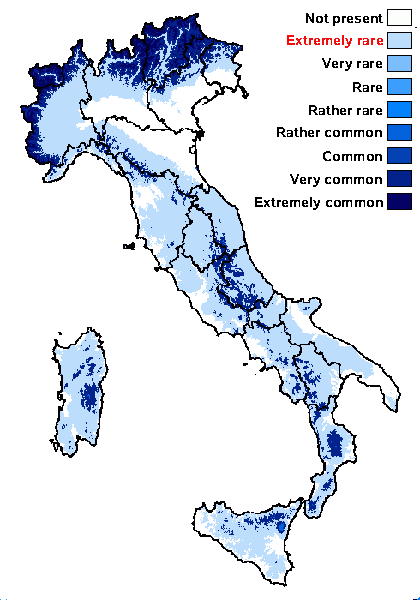
Predictive model
Herbarium samples
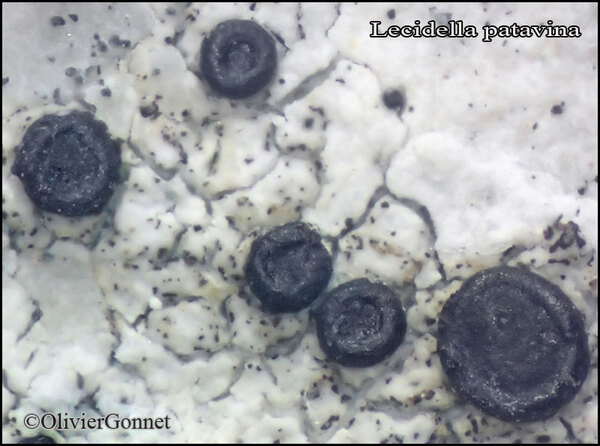
Courtesy Danièle et Olivier Gonnet - Source: https://www.afl-lichenologie.fr/Photos_AFL/Photos_AFL_L/Texte_L_4/Lecidella_patavina.htm
France, Crête du Mont d'Or, alt. 1450 m - Doubs
25/8/2016
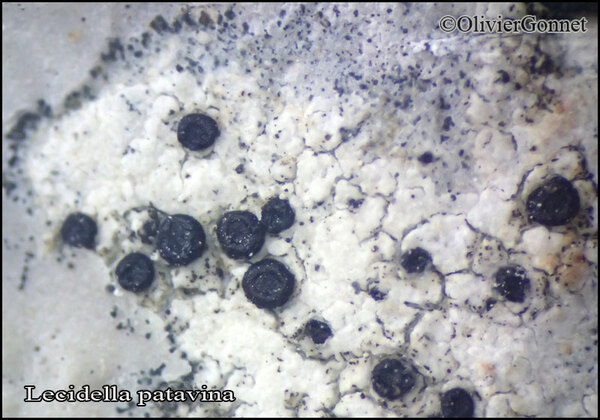
Courtesy Danièle et Olivier Gonnet - Source: https://www.afl-lichenologie.fr/Photos_AFL/Photos_AFL_L/Texte_L_4/Lecidella_patavina.htm
France, Crête du Mont d'Or, alt. 1450 m - Doubs
25/8/2016
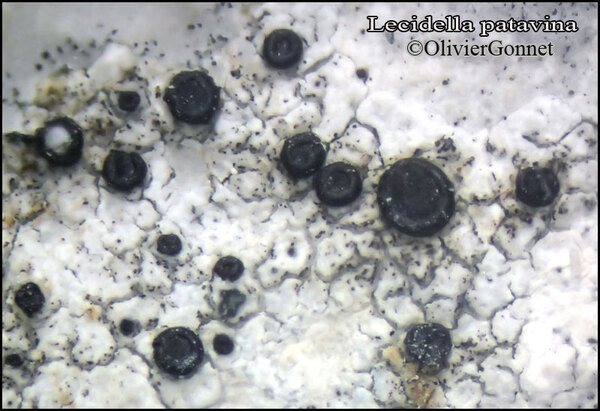
Courtesy Danièle et Olivier Gonnet - Source: https://www.afl-lichenologie.fr/Photos_AFL/Photos_AFL_L/Texte_L_4/Lecidella_patavina.htm
France, Crête du Mont d'Or, alt. 1450 m - Doubs
25/8/2016
Growth form: Crustose
Substrata: rocks
Photobiont: green algae other than Trentepohlia
Reproductive strategy: mainly sexual
Commonnes-rarity: (info)
Alpine belt: extremely common
Subalpine belt: very common
Oromediterranean belt: rather common
Montane belt: very common
Submediterranean belt: extremely rare
Padanian area: absent
Humid submediterranean belt: extremely rare
Humid mediterranean belt: absent
Dry mediterranean belt: absent

Predictive model
| Herbarium samples |

Courtesy Danièle et Olivier Gonnet - Source: https://www.afl-lichenologie.fr/Photos_AFL/Photos_AFL_L/Texte_L_4/Lecidella_patavina.htm
France, Crête du Mont d'Or, alt. 1450 m - Doubs
25/8/2016

Courtesy Danièle et Olivier Gonnet - Source: https://www.afl-lichenologie.fr/Photos_AFL/Photos_AFL_L/Texte_L_4/Lecidella_patavina.htm
France, Crête du Mont d'Or, alt. 1450 m - Doubs
25/8/2016

 Index Fungorum
Index Fungorum
 GBIF
GBIF
